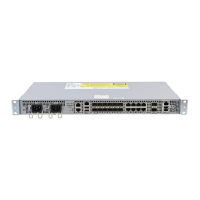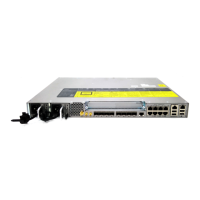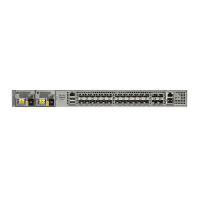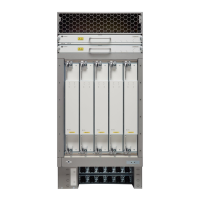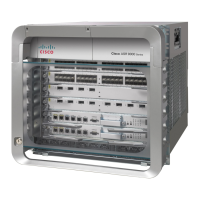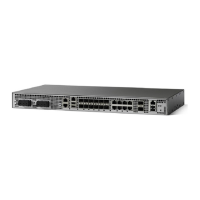Loopback Messages
CFM loopback messages are unicast frames that a MEP transmits, at the request of an administrator, to verify
connectivity to a particular maintenance point. A reply to a loopback message indicates whether a destination
is reachable but does not allow hop-by-hop discovery of the path. A loopback message is similar in concept
to an Internet Control Message Protocol (ICMP) Echo (ping) message.
A CFM loopback message can be generated on demand using the CLI. The source of a loopback message
must be a MEP; the destination may be a MEP or a MIP. CFM loopback messages are unicast; replies to
loopback messages also are unicast. CFM loopback messages specify the destination MAC address, VLAN,
and maintenance domain.
Traceroute Messages
CFM traceroute messages are multicast frames that a MEP transmits, at the request of an administrator, to
track the path (hop-by-hop) to a destination MEP. They allow the transmitting node to discover vital connectivity
data about the path, and allow the discovery of all MIPs along the path that belong to the same maintenance
domain. For each visible MIP, traceroute messages indicate ingress action, relay action, and egress action.
Traceroute messages are similar in concept to User Datagram Protocol (UDP) traceroute messages.
Traceroute messages include the destination MAC address, VLAN, and maintenance domain and they have
Time To Live (TTL) to limit propagation within the network. They can be generated on demand using the
CLI. Traceroute messages are multicast; reply messages are unicast.
Cross-Check Function
The cross-check function is a timer-driven post-provisioning service verification between dynamically
discovered MEPs (via CCMs) and expected MEPs (via configuration) for a service. The cross-check function
verifies that all endpoints of a multipoint or point-to-point service are operational. The function supports
notifications when the service is operational; otherwise it provides alarms and notifications for unexpected
endpoints or missing endpoints.
The cross-check function is performed one time. You must initiate the cross-check function from the CLI
every time you want a service verification.
SNMP Traps
The support provided by the Cisco software implementation of CFM traps is Cisco proprietary information.
MEPs generate two types of Simple Network Management Protocol (SNMP) traps, continuity check (CC)
traps and cross-check traps.
CC Traps
• MEP up—Sent when a new MEP is discovered, the status of a remote port changes, or connectivity
from a previously discovered MEP is restored after interruption.
• MEP down—Sent when a timeout or last gasp event occurs.
• Cross-connect—Sent when a service ID does not match the VLAN.
• Loop—Sent when a MEP receives its own CCMs.
• Configuration error—Sent when a MEP receives a continuity check with an overlapping MPID.
Carrier Ethernet Configuration Guide (Cisco ASR 920 Series)
132
Configuring Ethernet Connectivity Fault Management in a Service Provider Network
Cross-Check Function
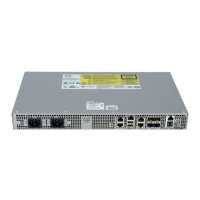
